- Home
- David Leavitt
In Maremma Page 2
In Maremma Read online
Page 2
NOTHING TELLS YOU more about a people than their homes. In Maremma, the interior ideal was dazzling white walls, shiny granite floors kept mirror-bright thanks to the chamois-bottomed slippers that many casalinghe (housewives) wear indoors, a ceremonial dining room (but rarely a living room), no lamps but bare bulbs hanging from the ceiling, and a mix of inherited rustic furniture with decidedly “modern” pieces that spoke of a remote and faintly unreal urban world. Many homes had only two books: the Holy Bible and the telephone directory. Some, however, had three books: the Holy Bible, the telephone directory, and a hagiography of Silvio Berlusconi that he himself had sent to every Italian household before an election.
Italy has gained general prosperity only since the Second World War. A common phenomenon was to see an old woman dressed in black being driven to the weekly outdoor market by her son in his Jeep Cherokee. The once poor tried to prove their affluence by living among new things, even if they were not so fine as the old ones, yet there was more to it than that: one did not have to look at too many Italian interior-design magazines to see that the country was continuing its long struggle to free itself from an oppressive inheritance. Like most Americans in Italy, we didn’t want to furnish our house in massive, dark furniture any more than most Italians did, but we weren’t prepared to go to the other extreme, the cruel minimalism of Milan design.
To a one, the outstanding artisans who worked on Podere Fiume—Magini the carpenter, Pepe the black_smith, Luca and Pierluigi the marble cutters, Sauro the stonemason, and the Rossis (door and window makers)—were incredulous when we told them that we wanted una casa d’epoca (a house from once upon a time). We wanted rough terra cotta floors, exposed beams, and a pietra serena fireplace. We wanted to construct a future based on our own private notions of comfort and incorporating a factitious past. (Perhaps Americans want old houses because we do not have enough history, whereas Italians want new ones because they have too much of it.) We wanted visitors to take it for granted that Podere Fiume’s origins were medieval, or, if not medieval, then still far in the past.
For some inexplicable reason, many people in Semproniano, kept apprised of our house’s progress by Sauro and his wife, Silvia, were preoccupied about the color we would choose to paint the interior walls. Gigliola, who owned the bakery, urged us to paint them white. “Con bianco non si sbaglia mai” (“You never go wrong with white”), she said. Sauro, too, advised white. Living in the country with a wire-haired fox terrier, however, could any color be less practical?
Podere Fiume from the South (Photo by MM)
From reading interior magazines, we had become familiar with the paints made by the English company Farrow & Ball. The colors not only had memorable names but came with stories, an appealing idea to writers: Calamine (“... colours like this one appeared regularly in country house anterooms and boudoirs from the 1870s on into Edwardian Times”); Charleston Gray (“The Bloomsbury Group used this colour extensively, both in interior decoration and on canvas”); India Yellow (“First available in England in the eighteenth century, this pigment was produced by reducing the bright yellow urine of cows fed on a special diet of mango leaves”); Ointment Pink (“Found in the dining room at Calke Abbey and the library at Kedleston ... and yes, similar to the Regency scheme in the entrance hall and staircase at Castle Coole”); Sugar Bag Light (“... very like the blue of paper used for lining drawers in the late eighteenth century”). One cannot judge a paint only by its name, however, and in the end we settled on Single Cream. For the trim work, we chose the elegantly concise String (“One of a series of pale, earth-pigment-based colours, which have been in continuous use either as an off-white with brighter colours or as its own colour with a brighter white”).
The Master Bedroom, Podere Fiume (Photo by Simon McBride)
After about three weeks—long weeks indeed, since by this point we had only to have the walls painted before we could move in—the paint arrived, by truck, from England, and Sauro began applying it. We had vacated our apartment in Rome on March 6 to oblige the new tenant, who was pregnant, and since then we had been leading a peripatetic existence in the expectation that the house would be finished in mid-April. From March 6 to April 9 we had rented a house in Saturnia. Podere Fiume not yet being habitable on the 9th, we went to Verona (April 9 to April 11), the Villa d’Este at Cernobbio (April 11 to April 14), and then to Domenico and Elizabeth’s vacation house in “Beverly Hills” (April 14 to April 24). Since our homelessness owed, at least in part, to Domenico’s overly optimistic estimation, they didn’t charge the exorbitant weekly rate that they usually charged other Americans.
It was during this stay that Sauro called us to say that he was painting the house and that he wasn’t so sure about the color. “It’s a little on the orange side,” he said. We suggested the color might be less intense once the paint had dried. If it didn’t, we’d drive over, have a look, and go from there.
The color was not less intense once the paint had dried. As it turned out, Sauro had in fact understated how orange the color actually was. It was the hot orange of certain curries. According to the label on the can, this was not Single Cream but Harissa.
After that, urgent calls were made, profuse apologies tendered, and a promise extracted from the one Italian in the shipping department at Farrow & Ball that the proper paint would be sped on its way to us that very afternoon. But in the meantime, where were we to live? The day before, Elizabeth had informed us that we would have to clear out of their house that weekend: they were coming to Beverly Hills and bringing guests. To make matters worse, the May ist holiday was approaching: one of the most traveled holidays of the Italian year, during which hotel rooms are virtually impossible to come by. If push came to shove, we’d have to sleep in our rental car.
Thence from Beverly Hills to Saturnia (April 24 to May 1); from Saturnia to Paestum (May 1 to May 2.—we were lucky enough to find a hotel); from Paestum to Lecce (May 2. to May 3); from Lecce to Asolo (May 3 to May 6); from Asolo back to Saturnia (May 6 to May 7); and finally, on May 7, to Podere Fiume. All told, we drove more than fourteen hundred miles. Sauro had re-primed the walls and painted them Single Cream. The bedroom closets, however, we left as they were as a tribute to the episode.
TMM, Paestum (Photo by DL)
4
OF ALL THE craftsmen who worked on Podere Fiume, the most entertaining was Pepe, the blacksmith. He was a short, chubby, balding, and slightly foppish Roman—he had been known to wear an ascot even while soldering—who always seemed as rumpled and stale as if he had just come off a long-haul flight. In a single sentence he could tell you about the giardino d’inverno (winter garden) he had built for the designer Valentino and lament that he had not had una bella cagarella (a good shit) in ages.
Pepe was a fixture at a certain bar on Via Cavour, not far from his studio near Trajan’s Forum, and there he insisted on buying a coffee for each and every friend of his who happened to walk in or whom he might have chanced to encounter and co-opt on the way. Each of his visits—and he made no fewer than five of them a day—cost him a minimum of fifteen thousand lire. So that he would not need to have cash on him always, he kept an account at the bar and settled it once a month. Pepe’s minimum of fifteen thousand lire a day came to two and a quarter million lire a month. Multiplied by twelve, one calculates that Pepe spent fifteen thousand dollars a year on coffee.
Like all true artisans, Pepe was self-dramatizing. His work, he would say, was not like anyone else’s. Although certain things might look simple, such as the wrought-iron brackets for the curtain rods, they required enormous effort and concentration to make. For this reason, he could hardly be expected to work more than two or three hours a day: only an automaton could work eight or ten hours a day. If lunch was particularly satisfying, perhaps he would be able to put in another half hour’s work during the afternoon. In any case, he must have a short rest first.
Still, in six months, he managed to complete all our iron work: grates for the do
wnstairs windows, three sets of doors, arched doors for a winter garden, railings for the stairs (a design copied from a terrace on a crumbling building in the Monti neighborhood of Rome), and finally, the curtain brackets and rods. Although Sauro and his assistants, Giampaolo and Fabio, were able to install the window grates and doors, Pepe insisted that he had to come up to install the railing himself.
We duly set Pepe up at an agriturismo run by Sauro’s cousin, but it would not do for him. Instead he decamped to the Locanda la Pieve, Semproniano’s one hotel, where all of his meals could be—and were—placed on account. (At the agriturismo, only breakfast was provided.) During the three days he was there, he worked a total of eight hours. Because Sauro and his crew put in a good ten hours a day, five (and sometimes six) days a week, they did not quite know what to make of Pepe and his ascots. They concluded that he was simply un personaggio (a character).
5
MAGINI, THE CARPENTER, was a voluble Roman in his mid-seventies: proud of his work, and justly so, though rather bored after more than a half-century’s labor. For him, food was much more interesting than wood. He was the archetypal paterfamilias and really lived for those occasions when all of his family, unto its furthest ramifications, were gathered at his table. Whenever we saw him about the work he was doing for us—to calculate the proper height for the countertops, or to design a credenza for the kitchen, or to copy an eighteenth-century Venetian bookcase that had secret doors on the sides—it always happened to be just before or just after lunch. While he lacked the urbanity of Agatha Christie’s Hercule Poirot, he shared her Belgian detective’s attitude toward eating well. In Mrs. McGinty’s Dead, Poirot reflects, “I am not in tune with the modern world. And I am, in a superior way, a slave as other men are slaves. My work has enslaved me just as their work enslaves them. When the hour of leisure arrives, they have nothing with which to fill their leisure. The retired financier takes up golf, the little merchant puts his bulbs in his garden, me, I eat. But there it is, I come round to it again. One can only eat three times a day. And in between are the gaps.”
Magini’s shop was on the outskirts of Rome and, like every shop of this sort, had a girlie calendar on the wall. Close by was a canteen where we had lunch with him and Domenico once (September 2.3,1997). The subject of conversation was food. Domenico was saying that according to an article he had just read, fried squid had more cholesterol than practically anything else, even eggs. At that moment the waiter came up and announced that the piatti del giorno (day’s specials) were spaghetti alla carbonara and calamari fritti. No one ordered the fried squid but we all ordered the spaghetti, which was delicious and beautiful beyond words: pasta the color of a marigold, flecked with transparent confetti of pancetta, presented in a white bowl. “Please don’t tell Elizabeth I had this;” Domenico asked. “She’s on the cabbage soup diet.” The cabbage soup diet was in fashion that year. Emma, the younger of their two daughters, recently had remarked, “Mommy looks as if she is going to have a baby out of her bottom.”
If you’d had a look at Magini’s arteries, you would have been worried. He himself, however, lived as if there was no tomorrow In fact, he told us, the previous Sunday he and his wife had made tortellini a mano (by hand) for a small family lunch: seven hundred tortellini for ten people. Seventy tortellini per person. One thought of Blake’s proverb: “Enough—or too much.” One also thought that Magini’s indifference to his lipids and so on might not be so foolish after all. This was the year after an airplane en route to Paris had blown up over Long Island, killing every man, woman, and child aboard. How many of those souls had denied themselves eggs, or ice cream, or fried squid the day before they flew, believing that low cholesterol would assure them a longer life?
6
BECAUSE WE HAD been living for half a dozen years in furnished or semifurnished apartments when we bought Podere Fiume, the only furniture we owned was a cornflower-blue sofa and a pair of leather library chairs, which we intended to put in the living room; a desk with chesnut legs and a top of Ligurian pietra serena; a Bokara carpet; four neo-Gustavian chairs with unupholstered seats; and a bed. This is how we came to meet Olimpia Orsini.
An interior designer of some repute in Rome, Olimpia also owned a little shop that she refused to call a shop—it was her “studio,” she insisted—on Via del Boschetto. (She referred to herself not as a “designer” but as an “interior,” which, considered together with the fact that she had taken a degree in psychology, was appropriate.) A few months after we met her, she transferred her shop to a small street just off Via Marguta, where some of the most expensive antique stores in Rome are located, and had business cards printed on which she gave her address as “Vicolo dell’Orto di Napoli (Via Marguta).” Such a street name must have seemed an augur of good things to Olimpia, who was from Naples. Her age was difficult to determine—anywhere between forty-five and sixty, we figured. She had long dark-blond hair, wore Chanel suits in even the most inclement weather, and smoked incessantly.
After we moved to Podere Fiume, we asked Renato, the aristocracy-obsessed owner of the antique shop at the Terme di Saturnia, if he knew her. “The Countess Orsini?” he asked excitedly. The Orsinis, he reminded us, were a noble Tuscan family; an Orsini had built the fantastic and eerie statuary garden at Bomarzo; there was an Orsini stronghold not far from us, in Pitigliano.
To these Orsinis, Olimpia bore the same relation that Tess does to the d‘Urbervilles: that is to say, none at all. In fact, Olimpia was not her real name—it was Marilena—and even this Elizabeth had discovered only because she had happened to glimpse her carta d’identità one afternoon when it was lying on the desk of her shop. Her husband, Puccio, was a retired Alitalia pilot—“the sort of man,” Domenico said, “who always has four or five million lire in his pocket”—and such was his devotion to Olimpia that, rather than relaxing in his retirement, he spent most of his time driving around Rome on a Vespa doing commissions for her. “Puccio,” she might instruct, “take these chairs over to Luigi’s workshop.”
“Si, bella,” he would answer, strap a pair ofgilt-trimmed armchairs onto his Vespa, and zoom off. (They had a son in his early twenties whom we never saw. “I could never have a daughter,” Olimpia told us. “I like being the only hen in the coop.”)
That Olimpia had wonderful, eclectic taste was indisputable. Her shop was always full of curious and unlikely pieces: Venetian mercury mirrors edged with seashells, bronze lamps with classical figures in high relief, chairs upon the legs of which mermen and mermaids disported themselves, panels of antique wallpaper and toile de Jouy, a leopard skin with taxidermied head draped nonchalantly across the back of a dormeuse. Olimpia upholstered all the furniture in her shop in the plainest muslin. Nothing was dark, and no wood was wood-colored. Chairs that she brought into the shop in dreadful condition, grimy from years of neglect, she would “refresh” simply by stitching some thousand-lire-a-meter cotton on to the worn cushions and slapping the wood with white paint. In her fondness for white, if in no other regard, she echoed Gigliola. Both women echoed the famous English designer Syrie Maugham. (Olimpia’s failure, however, to replace the old horsehair-and-straw stuffing in some of these chairs considerably distressed Luigi, the upholsterer, who considered them unhygienic.)
From Olimpia, we ended up buying a couple of side tables and a derelict but magnificent eighteenth-century carved-wood-and-gesso sofa from Venice, which had managed to escape the attentions of her paintbrush only by virtue of its extraordinary color—the most subtle of gray greens. We also bought a pair of white armchairs that were intended for the winter garden—a room occupying an arcaded space where farm equipment was formerly stored. (These chairs were something of a wish fulfillment for MM, who, when being taught perspective in high school art class, had drawn, in one-point perspective, a chair in the very style of those we’d bought from Olimpia. Although the drawing was done in dark gray pencil, his mother helped him to frame it with a mat the color of one of the stripes of the fabri
c that covered the seat and back of the chair that had been his model.) Unfortunately, their stuffing smelled, and Tolo displayed from the very beginning a great fondness for sleeping on them. We asked Olimpia if she would buy them back or, short of that, sell them on our behalf, which she did in four days.
7
ONE BLUSTERY AFTERNOON, Sauro came by to do some small work. When he arrived, we had a candle burning in a pewter candlestick on the mantel of the fireplace. Sauro looked at it quizzically.
“A candle!” he said. “Did you have a power outage?”
“It’s for atmosphere;” we answered. “It makes a nice light.”
With an affirmative “Hmm!” Sauro took his tools upstairs.
Atmosphere—the sort embodied by a candle burning on a blustery afternoon—meant less to him than it did to us. His own house was a far cry from the Italian country house of dreams, where worn armchairs and wooden footstools sat gathered around the immense fireplace that in dreams is always ablaze and crackling, giving the house a center around which to cohere. Podere Fiume, however, had no fireplace when we bought it. In the kitchen, which would later become DL’s study there was only the little Zoppas wood-burning stove. Perhaps because he came from Bari and had been educated in California, Domenico understood our longing for the hearth that in English is paired with home. In his own house in Beverly Hills, he had put fireplaces not only in the living room and dining room, but also the kitchen and two of the bedrooms. “When we’re there in the winter, it’s so nice and toasty,” he said, taking as much pleasure in his command of American idioms as in the toastiness itself.

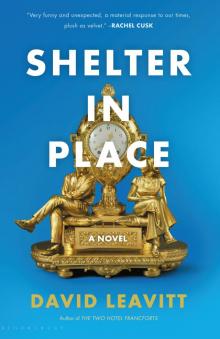 Shelter in Place
Shelter in Place The Man Who Knew Too Much: Alan Turing and the Invention of the Computer (Great Discoveries)
The Man Who Knew Too Much: Alan Turing and the Invention of the Computer (Great Discoveries) Family Dancing
Family Dancing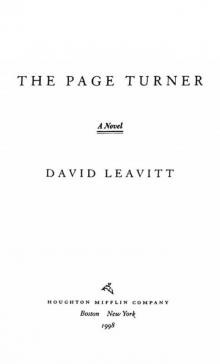 Page Turner Pa
Page Turner Pa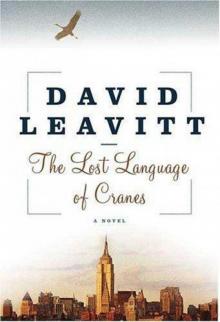 The Lost Language of Cranes: A Novel
The Lost Language of Cranes: A Novel The Body of Jonah Boyd
The Body of Jonah Boyd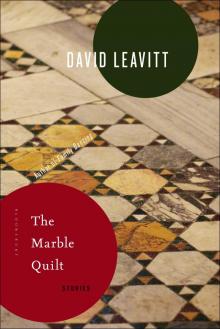 The Marble Quilt
The Marble Quilt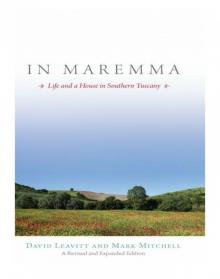 In Maremma
In Maremma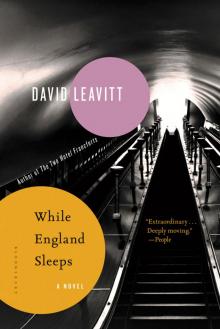 While England Sleeps
While England Sleeps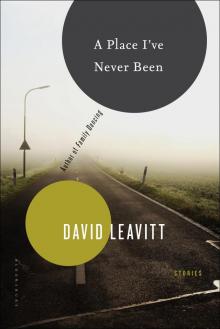 A Place I've Never Been
A Place I've Never Been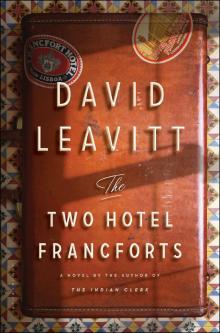 The Two Hotel Francforts
The Two Hotel Francforts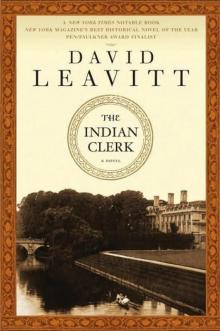 The Indian Clerk
The Indian Clerk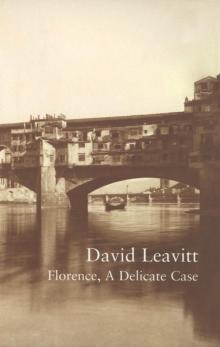 Florence
Florence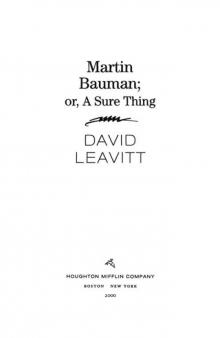 Martin Bauman
Martin Bauman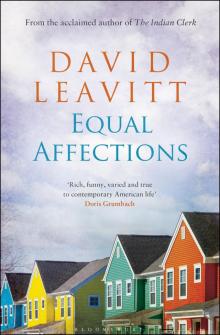 Equal Affections
Equal Affections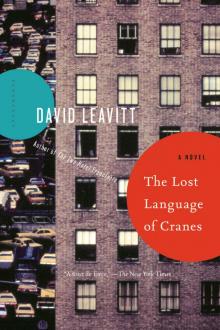 The Lost Language of Cranes
The Lost Language of Cranes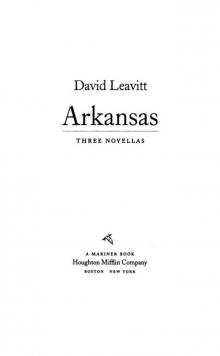 Arkansas
Arkansas